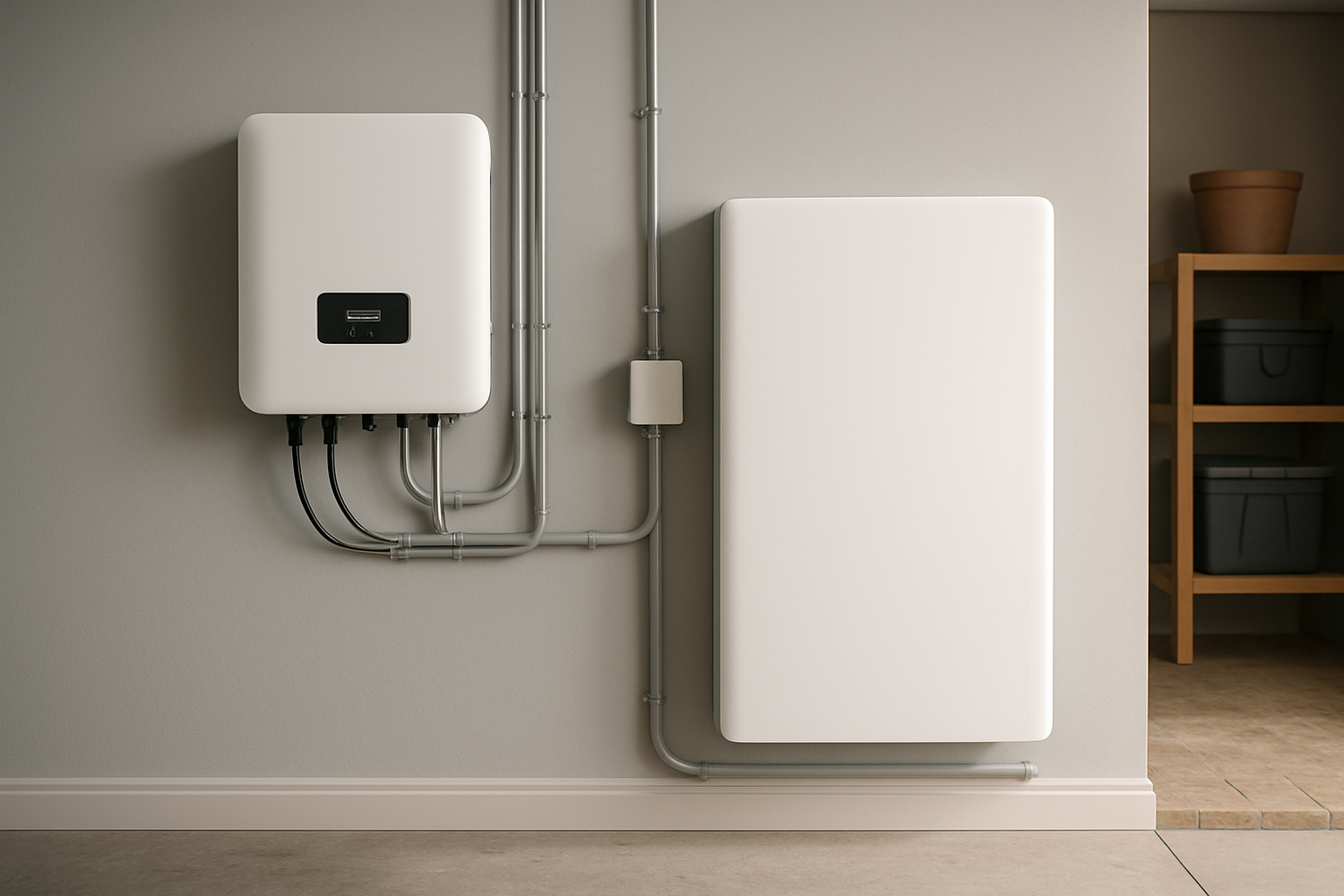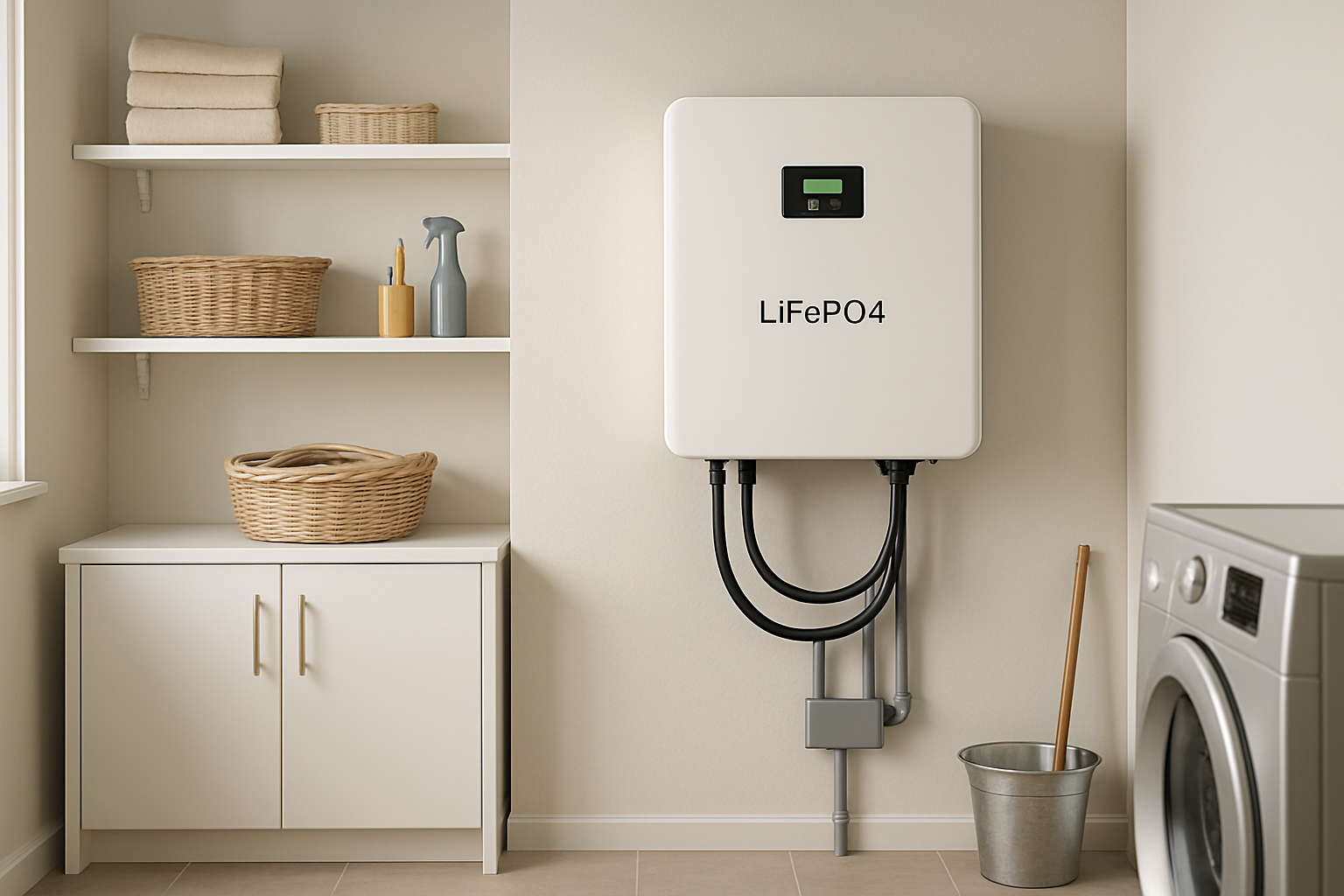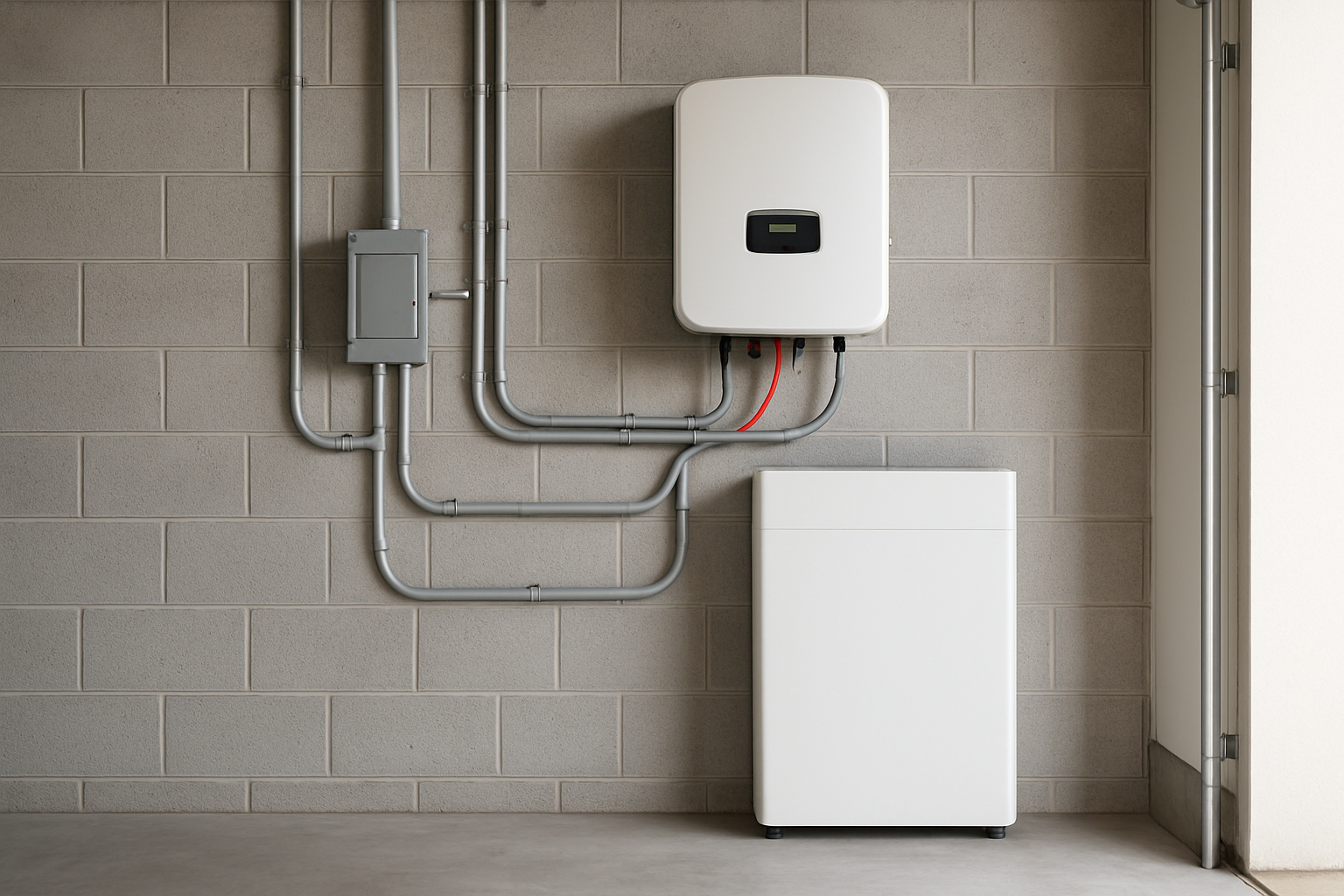Adding a residential battery storage system is a significant step toward energy independence. It provides backup power during outages, helps you save on electricity bills, and allows you to use more of the clean energy your solar panels generate. A successful home battery installation, however, depends on careful planning. This 7-point checklist will guide you through the essential requirements for a smooth and effective setup.
1. Assessing Your Energy Needs and Goals
Before looking at hardware, you must first understand your own energy profile. A system tailored to your specific needs will deliver the best results and financial returns.
Calculating Your Daily Energy Consumption
Start by reviewing your past utility bills to find your average daily electricity usage, measured in kilowatt-hours (kWh). For a more precise picture, use an energy monitoring device to track real-time consumption. Note which heavy-load appliances you use frequently, such as air conditioners, electric vehicles chargers, or pumps, as these will significantly influence the battery size you need.
Defining Your Primary Objective
What is the main reason you want a battery? Your goal shapes the entire project. If your priority is backup power, you need to size the battery to cover essential loads during an outage. If you want to maximize solar self-consumption, the system should be designed to store excess solar energy produced during the day for use at night. For those on time-of-use (TOU) utility rates, the battery can be programmed to charge during off-peak hours and discharge during expensive peak hours.
2. Evaluating Your Property and System Siting
The physical location of your battery is critical for safety, performance, and longevity. Not every space is suitable for a home battery installation.
Finding the Right Location
LiFePO4 (Lithium Iron Phosphate) batteries, known for their safety and stability, perform best in a controlled environment. An insulated garage, basement, or utility room is often ideal. The location should be dry, well-ventilated, and protected from extreme temperatures. While some enclosures are rated for outdoor installation, placing them in a sheltered spot away from direct sunlight and moisture is always preferable.
Structural and Space Considerations
Home batteries are heavy. Ensure the wall or floor at the chosen installation site can support the weight. National and local building codes also mandate specific clearance requirements around the equipment for ventilation and maintenance access. An experienced installer will be familiar with these regulations and ensure your installation is compliant and safe.
3. Sizing Your Battery and Solar Array Correctly
Proper sizing is a balancing act. An undersized system will not meet your needs, while an oversized one can be an unnecessary expense.
Matching Battery Capacity to Your Needs
Battery capacity is measured in kWh. A 10 kWh battery, for example, can deliver 1 kilowatt of power for 10 hours. To size your battery, list the appliances you want to power and for how long. The table below offers a simple estimation.
| Appliance | Average Power (Watts) | Hours of Use | Energy Needed (Wh) |
|---|---|---|---|
| Refrigerator | 200 W | 8 hours (cycling) | 1600 Wh |
| LED Lights (5) | 50 W | 6 hours | 300 Wh |
| Internet Router | 10 W | 24 hours | 240 Wh |
| Laptop Charging | 65 W | 4 hours | 260 Wh |
| Total Estimated | - | - | 2400 Wh or 2.4 kWh |
The DC/AC Ratio and System Efficiency
In a solar-plus-storage system, the DC/AC ratio—the ratio of the solar panel's DC power rating to the inverter's AC power rating—is an important design consideration. As noted in an IEA report on next-generation solar, installing battery storage systems with solar PV can effectively increase self-consumption and optimize your energy usage. A properly designed system ensures you capture as much solar energy as possible to charge your batteries and power your home efficiently.
4. Understanding System Components and Compatibility
A residential battery storage system is more than just a battery. It's an ecosystem of components that must work together seamlessly.
The Core Trio: Battery, Inverter, and Solar Panels
The battery stores energy. The solar panels produce it. The inverter acts as the brain, converting DC electricity from the panels and battery into AC electricity for your home. It also manages the flow of energy between the panels, battery, home, and grid. The battery's management system (BMS) must communicate flawlessly with the inverter for safe and efficient operation.
AC vs. DC Coupling
When integrating a battery with solar, you can use AC or DC coupling. DC-coupled systems connect the battery directly to the DC side of the solar array. As explained by the Department of Energy, this setup is generally more efficient for new installations because it requires only one inverter. AC-coupled systems are often used to add batteries to existing solar installations, using a separate battery inverter.
5. Navigating Permits, Regulations, and Incentives
A home battery installation is a construction project that must adhere to local rules and regulations.
The Importance of Local Permitting
Nearly all home battery installations require a permit from your local authority. This process ensures the system is installed safely and complies with electrical and building codes. A permit is also often necessary for insurance purposes and for connecting to the utility grid. A professional installer will handle the entire permitting process.
Tapping into Financial Incentives
Governments and utilities offer various incentives to encourage the adoption of renewable energy storage. These can include federal tax credits, state rebates, and local programs. Researching available incentives can significantly reduce the net cost of your residential energy storage system, making it a more attractive investment.
6. Selecting a Qualified Installer
The quality of your home battery installation directly impacts its safety, performance, and lifespan. Choosing the right professional is paramount.
Verifying Credentials and Experience
Look for installers with specific experience in residential battery storage. Certifications from organizations like the North American Board of Certified Energy Practitioners (NABCEP) are a strong indicator of expertise. Ask for references and review their portfolio of past projects. A reputable installer will be transparent and knowledgeable.
Getting Multiple Quotes
Obtain at least three detailed quotes from different installers. A proper quote should include a full breakdown of costs for equipment, labor, and permits. Compare the proposed hardware, warranty terms, and the installer's experience, not just the bottom-line price. This diligence helps you find the best value.
7. Planning for Long-Term Operation and Maintenance
Your system is a long-term asset. Understanding how to monitor and maintain it will ensure you get the most out of your investment.
Monitoring System Performance
Most modern energy storage systems come with a monitoring application for your smartphone or computer. This allows you to track your energy production, storage levels, and consumption in real time. Monitoring helps you understand your energy habits and verify that the system is performing as expected. For a comprehensive overview of what to track, this ultimate reference on solar storage performance provides valuable insights into key metrics.
Routine Maintenance Checks
LiFePO4 battery systems are known for being virtually maintenance-free. However, a periodic visual inspection is a good practice. Check that vents are clear of debris and that all connections remain secure. Your installer should provide a maintenance schedule and a checklist of what to look for. According to research from IRENA, storage and other distributed energy resources are becoming key to providing stability in modern power systems, highlighting their reliability.
Your Path to Energy Independence
Following this checklist helps ensure your home battery installation is a sound investment. By carefully assessing your needs, selecting the right components, and working with a qualified professional, you can build a reliable and efficient residential energy storage system. This preparation paves the way for greater energy security and long-term savings.
Disclaimer: This article provides general information and is not a substitute for professional, legal, or financial advice. Consult with a qualified installer and financial advisor to address your specific situation.
Frequently Asked Questions
How long does a home battery installation take?
A typical residential battery storage installation takes one to two days. The timeline can vary based on the complexity of the system, the location of the equipment, and the local inspection process.
What is the lifespan of a LiFePO4 home battery?
High-quality LiFePO4 batteries are built for durability. They typically last 10 to 15 years or longer and are often warrantied for 5,000 to 10,000 charge cycles, offering a long-term energy storage solution.
Can I add a battery to my existing solar panel system?
Yes, you can add a battery to an existing solar array. This process is known as retrofitting. It is commonly achieved with an AC-coupled battery system, which integrates smoothly with your current solar inverter.





Leave a comment
All comments are moderated before being published.
This site is protected by hCaptcha and the hCaptcha Privacy Policy and Terms of Service apply.